Seven ways ESA has cut its environmental footprint
Friday, 03 May 2024 07:19
ESA is committed to almost halve its greenhouse gas emissions linked to energy consumption by 2025 compared to 2019 levels. But how can ESA keep accelerating the use of space for the sustainable development of society while reducing its emissions?
China is sending a probe to get samples from the less-explored far side of the moon
Friday, 03 May 2024 06:54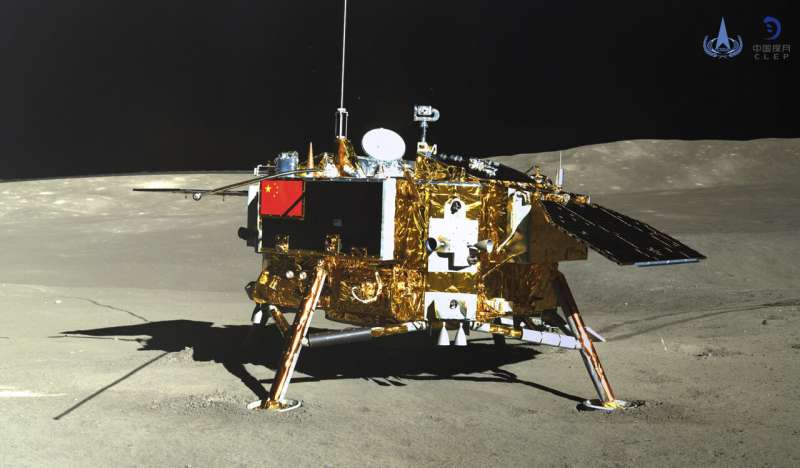
China sends a probe to get samples from the less-explored far side of the moon
Friday, 03 May 2024 06:54
ESA’s cloud and aerosol satellite aerosol-free
Friday, 03 May 2024 06:29
A few weeks ago, a team of engineers carefully extracted ESA's EarthCARE satellite from its protective transport container, initiating a meticulous process of inspection, testing and preparation for its liftoff later this month from the Vandenberg launch site in California.
Amidst an extensive checklist of tasks, was a rigorous effort to guarantee that the satellite is in pristine condition, underscoring the thorough attention to detail essential to making the satellite ready for launch.
Ariane 6 launches: Exolaunch’s EXOpod Nova
Friday, 03 May 2024 06:00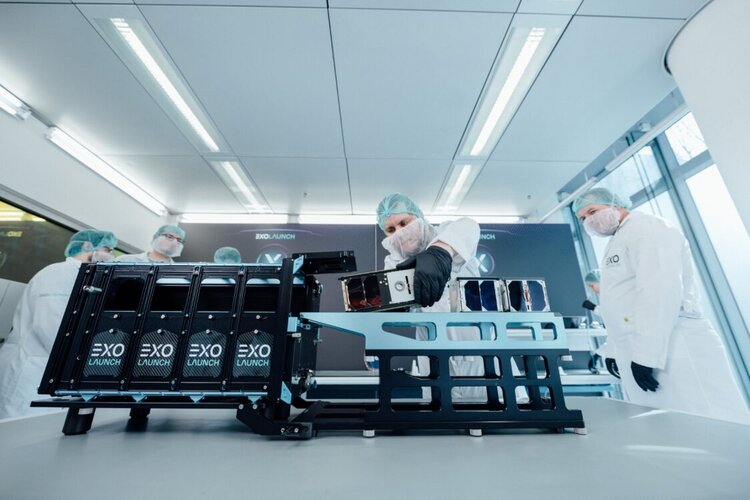
Europe’s newest rocket soon launches, taking with it many space missions each with a unique objective, destination and team at home, cheering them on. Whether launching new satellites to look back and study Earth, peer out to deep space or test important new technologies in orbit, Ariane 6’s first flight will showcase the versatility and flexibility of this impressive, heavy-lift launcher. Read on for all about EXOpod Nova, then see who else is flying first.
Boeing's Starliner is about to launch - if successful, the test represents an important milestone for commercial spaceflight
Thursday, 02 May 2024 23:38 If all goes well late on May 6, 2024, NASA astronauts Butch Wilmore and Suni Williams will blast off into space on Boeing's Starliner spacecraft. Launching from the Kennedy Space Center, this last crucial test for Starliner will test out the new spacecraft and take the pair to the International Space Station for about a week.
Part of NASA's commercial crew program, this long-delayed missio
If all goes well late on May 6, 2024, NASA astronauts Butch Wilmore and Suni Williams will blast off into space on Boeing's Starliner spacecraft. Launching from the Kennedy Space Center, this last crucial test for Starliner will test out the new spacecraft and take the pair to the International Space Station for about a week.
Part of NASA's commercial crew program, this long-delayed missio Space Force flexes muscle as Pentagon’s smallest but vital branch
Thursday, 02 May 2024 19:47

SpaceX launches Maxar’s first WorldView Legion imaging satellites
Thursday, 02 May 2024 17:56

Webinar – Space Loves AI: How AI promises to transform space operations
Thursday, 02 May 2024 16:57
Japanese aerospace company captures an actual picture of space debris
Thursday, 02 May 2024 16:16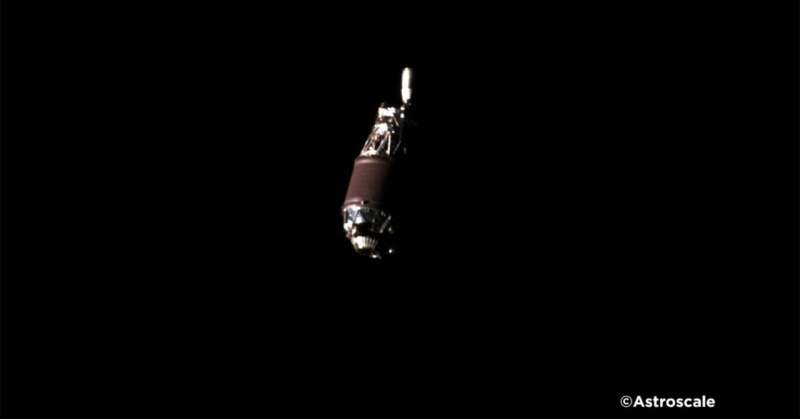
Space debris is a growing problem, so companies are working on ways to mitigate it. A new satellite called ADRAS-J was built and launched to demonstrate how a spacecraft could rendezvous with a piece of space junk, paving the path for future removal.
Astroscale Japan Inc, the Japanese company behind the satellite, released a new picture from the mission showing a close image of its target space debris, a discarded Japanese H2A rocket's upper stage, captured from just a few hundred meters away.
ADRAS-J stands for Active Debris Removal by Astroscale-Japan, and is the first satellite ever to attempt to safely approach, characterize and survey the state of an existing piece of large debris. This mission will only demonstrate Rendezvous and Proximity Operations (RPO) capabilities by operating in near proximity to the piece of space debris, and gather images to assess the rocket body's movement and the condition of the structure, Astroscale Japan said.
The Great Observatory for Long Wavelengths (GO-LoW) proposal
Thursday, 02 May 2024 16:16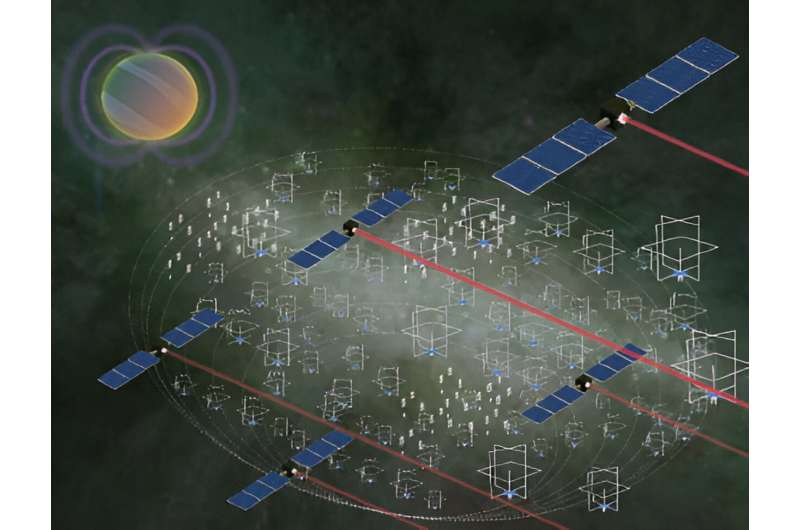
Humankind has never before seen the low frequency radio sky. It is hidden from ground-based telescopes by the Earth's ionosphere and challenging to access from space with traditional missions because the long wavelengths involved (meter- to kilometer-scale) require infeasibly massive telescopes to see clearly.
Electromagnetic radiation at these low frequencies carries crucial information about exoplanetary and stellar magnetic fields (a key ingredient to habitability), the interstellar/intergalactic medium, and the earliest stars and galaxies.
The Great Observatory for Long Wavelengths (GO-LoW) proposes an interferometric array of thousands of identical SmallSats at an Earth-Sun Lagrange point (e.g., L5) to measure the magnetic fields of terrestrial exoplanets via detections of their radio emissions at frequencies between 100 kHz and 15 MHz. Each spacecraft will carry an innovative Vector Sensor Antenna, which will enable the first survey of exoplanetary magnetic fields within 5 parsecs.
In a departure from the traditional approach of a single large and expensive spacecraft (i.e.
Fluidic telescope (FLUTE): Enabling the next generation of large space observatories
Thursday, 02 May 2024 16:16
The future of space-based UV/optical/IR astronomy requires ever larger telescopes. The highest priority astrophysics targets, including Earth-like exoplanets, first generation stars, and early galaxies, are all extremely faint, which presents an ongoing challenge for current missions and is the opportunity space for next generation telescopes: larger telescopes are the primary way to address this issue.
With mission costs depending strongly on aperture diameter, scaling current space telescope technologies to aperture sizes beyond 10 m does not appear economically viable. Without a breakthrough in scalable technologies for large telescopes, future advances in astrophysics may slow down or even completely stall. Thus, there is a need for cost-effective solutions to scale space telescopes to larger sizes.
The FLUTE project aims to overcome the limitations of current approaches by paving a path towards space observatories with large aperture, unsegmented liquid primary mirrors, suitable for a variety of astronomical applications. Such mirrors would be created in space via a novel approach based on fluidic shaping in microgravity, which has already been successfully demonstrated in a laboratory neutral buoyancy environment, in parabolic microgravity flights, and aboard the International Space Station (ISS).
Pulsed plasma rocket (PPR): Shielded, fast transits for humans to Mars
Thursday, 02 May 2024 16:16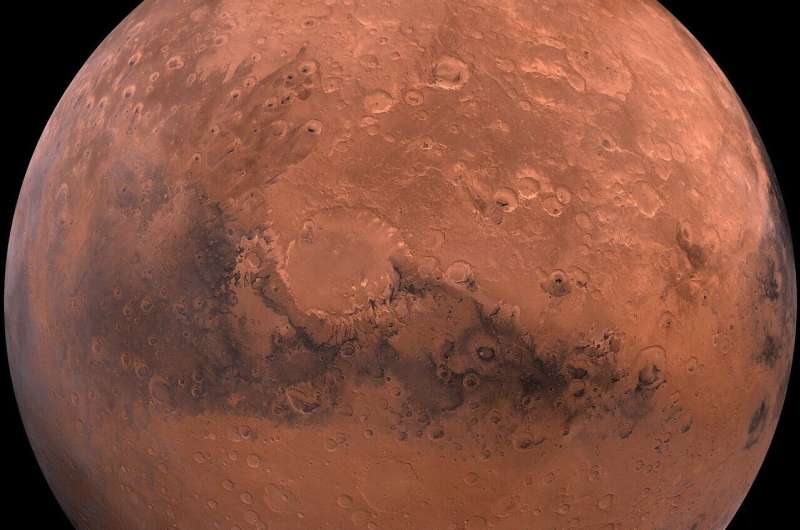
The future of a space-faring civilization will depend on the ability to move both cargo and humans efficiently and rapidly. Due to the extremely large distances that are involved in space travel, the spacecraft must reach high velocities for reasonable mission transit times. Thus, a propulsion system that produces a high thrust with a high specific impulse is essential. However, no such technologies are currently available.
Howe Industries is currently developing a propulsion system that may generate up to 100,000 N of thrust with a specific impulse (Isp) of 5,000 seconds. The Pulsed Plasma Rocket (PPR) is originally derived from the Pulsed Fission Fusion concept, but is smaller, simpler, and more affordable.
The exceptional performance of the PPR, combining high Isp and high thrust, holds the potential to revolutionize space exploration. The system's high efficiency allows for manned missions to Mars to be completed within a mere two months.
Alternatively, the PPR enables the transport of much heavier spacecraft that are equipped with shielding against Galactic Cosmic Rays, thereby reducing crew exposure to negligible levels. The system can also be used for other far range missions, such as those to the Asteroid Belt or even to the 550 AU location, where the sun's gravitational lens focuses can be considered.
L3Harris scores payload contract for Millennium’s Foo Fighter missile tracking satellites
Thursday, 02 May 2024 15:06




